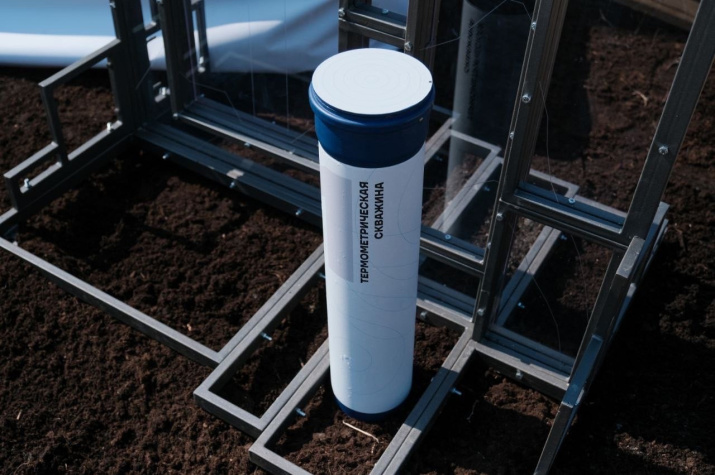Approximately 6 million km2 of the territory of Russia is covered with permafrost, which has remained stable for centuries. Cities and enterprises have been built on these vast spaces, roads and pipelines have been laid. Climate change, which we’ve witnessed at the beginning of the 21st century, activates the processes of degradation of permafrost and the soils containing it. In such conditions, our country needs a reliable monitoring system that ensures the safety of residential and industrial buildings and structures, transport facilities. Its first station has already appeared in Salekhard.
A comprehensive permafrost monitoring network will be deployed throughout the cryolithozone distribution area. The operator of the unique system will be the Arctic and Antarctic Research Institute (AARI). On May 19, the first thermometric borehole started operating in Salekhard on the territory of the Yamalo-Nenets Center for Hydrometeorology and Environmental Monitoring.
The depth of the borehole is about 25m. There are 32 sensors installed inside, the distance between which is from 10cm to 2m. Data from the recording unit is sent online to the Permafrost Monitoring Center of AARI. All the equipment used in this system is manufactured in Russia.
In total, the monitoring network in the territories of permafrost distribution will include 140 stations. It is planned to conduct continuous automatic temperature measurements at different depths. The method of arranging thermometric boreholes and data transmission has already been tested in the Far North of Russia and on the Svalbard archipelago.
The basis for the monitoring network will be the meteorological stations of Roshydromet, which will complement the observations of permafrost with accompanying meteorological data and significantly reduce costs. The density of the distribution of permafrost observation stations corresponds to the recommendations of the World Meteorological Organization. In 2023, 20 observation stations will be equipped, 58 more will appear next year. It is planned to fully deploy the system by the end of 2025.
According to the head of the Ministry of Natural Resources of Russia Alexander Kozlov, the place for installing the first system was not chosen by chance. It was here, in Salekhard, that one of the first Russian meteorological stations was opened at the end of the 19th century.
“A comprehensive monitoring network will provide a constant flow of data on the state of permafrost. Continuous temperature measurements will reveal the areas of greatest melting and risk for civil and industrial facilities. We will be able to estimate natural hydrocarbon emissions in order to specify the processes of climate change in Russia. Based on the information received, scientists will be able to prepare maps reflecting the dynamics of permafrost changes and make forecasts about possible consequences for the environment and opportunities for socio-economic development of these territories. The monitoring system developed by us will become the basis for further geotechnical research. The data obtained will be available to all interested organizations. This is an unprecedented project in which hundreds of companies and enterprises operating in Russia are interested," said Aleksander Makarov, director of AARI.


